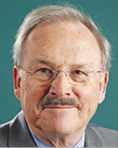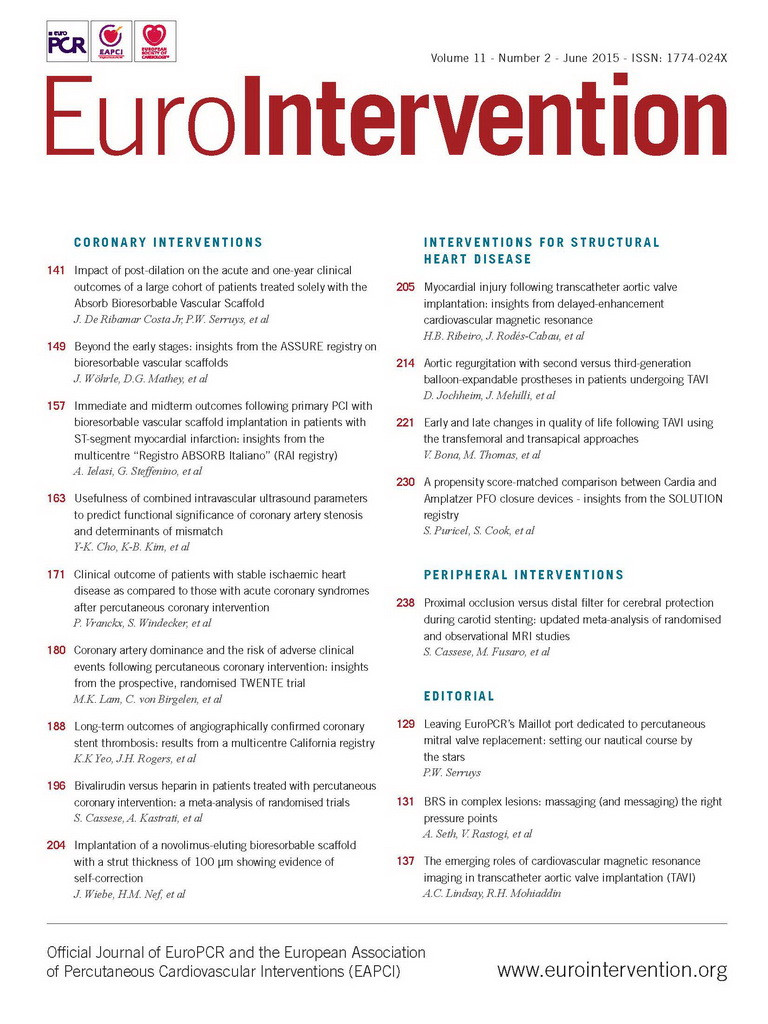
Reflecting on “Transcatheter mitral valve replacement: new valves and experiences”, which for me was a truly impressive session during last month’s EuroPCR, I had the privilege of having a hostess accompany me from the main arena to the room Maillot where this session was taking place. When we arrived at this tumultuous port, she guided me to my seat in the midst of a very packed room, where even the gangways were filled to overflowing. This crowded attendance illustrates well the tremendous interest in mitral valve replacement, something which only a mere two years ago seemed to be hypothetical and too difficult to achieve. Why? For the simple reasons that all of the experts referred to the fact that there is no landing zone, that it is a disease of the subvalvular apparatus, or the ventricle. Add to this mix the concept of valve degeneration or functional mitral regurgitation and it is apparent that the complexity in achieving a replacement is considered to be five to ten times more complicated than in the aorta. Despite these apparently insurmountable hurdles, the field has literally exploded with the clinical application of mitral replacement in fewer than 100 patients.
At some point during the discussion, one of the speakers mentioned that combining the technique of repair with the technique of valve replacement has led to an estimated 40 devices in preparation, all at different stages of development, either at bench, in vitro, preclinical or clinical. The audience asked the panel which technique was most likely to come out on top, in fact this was the predominant theme of the questions. This explosion of technology makes it somewhat unpredictable at the present time to foresee which technology will still be in play two or three years down the line.
During this same session, there were multiple queries from surgeons and anatomical pathologists raising questions concerning the fact that we cannot really test certain scenarios in animal models. For example, what will happen when you clip a diseased or non-diseased valve in an existing clip system? Will it become necrotic or haemorrhagic? Will it trigger an inflammatory reaction? In many of these systems under development chordae and papillary muscle stretching will take place due to pushing, eventually effecting the volumetric configuration of the ventricle and this without even mentioning late remodelling of the ventricle after the mitral regurgitation is corrected. Some of the post-mortem animal studies clearly indicate good tissue coverage of the device, but from time to time remnants of thrombus were discovered. So, therefore, the old issue of short or long- term DAPT will keep us busy as clinicians for years to come.
Another important point is that in the current heavily regulated environment we miss a surgeon of the calibre of the renowned Åke Senning, a pioneering cardiac surgeon originally from Sweden, but who later worked in Zurich. He implanted the first cardiac pacemaker in 1958, invented the Senning operation for transposition of the great vessels, and performed the first heart transplant in Switzerland in 1969. It was he who referred the first patient to Andreas Grüentzig, a patient who was 42 years old, healthy, with a normal lipid profile and only a short proximal lesion in the LAD. Senning told the board of the hospital that he would be present in the cathlab during this case and he would also be present if late complications were to appear. Today, pioneers such as Alain Cribier who performed the first transcatheter aortic valve replacement in Rouen, and Lars Søndergaard who, together with Olaf Franzen, implanted the first transcatheter mitral valve replacement in Copenhagen, are trying to help “compassionate” patients with extremely high comorbidities and extremely low ejection fractions, knowing all too well that cardiac afterload increases as does the risk of mortality. So, it is with this in mind that I beg surgeons in the context of what is possible, and from an ethical point of view, to develop a strategy of performing these procedures in patients who are of course at risk, but not in a premorbid state. A good example of great multidisciplinary teamwork are the cases in Paraguay in which transcatheter mitral valves were implanted and observed for up to two hours before proceeding with mitral valve surgery. We Europeans should also take into account a new mind-set in the regulatory space that may impinge upon our research. CE regulatory rules are becoming more difficult and yet, on the other hand , the FDA is seemingly opening up to innovation as was witnessed by a first-in-man mitral valve replacement at the Minneapolis Heart Institute in April of this year.
In conclusion, this is a very exciting field, and although we have a slight sensation of deja vu going back to the first days of the TAVI, the treatment of the mitral valve is obviously much more complicated with many hurdles to overcome. This mitral session was very encouraging and, as we move farther along towards the future, many of the questions raised will most certainly be answered.

